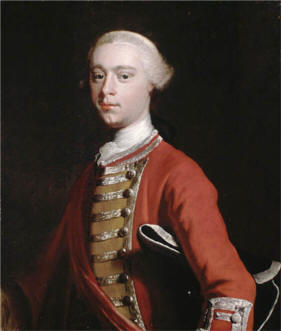Gulf of St. Lawrence Campaign (1758)
| Gulf of St. Lawrence Campaign | |||||
|---|---|---|---|---|---|
| Part of French and Indian War | |||||
 Brigadier-General James Wolfe, British commander |
|||||
|
|||||
| Commanders and leaders | |||||
|
|||||
| Units involved | |||||
| 40th Regiment of Foot | |||||
The Gulf of St. Lawrence Campaign (also known as The Gaspee Expedition) occurred during the French and Indian War (the North American theatre of the Seven Years' War) when British forces raided villages along present-day New Brunswick and the Gaspé Peninsula coast of the Gulf of Saint Lawrence. Sir Charles Hardy and Brigadier-General James Wolfe were in command of the naval and military forces respectively. After the Siege of Louisbourg (1758), Wolfe and Hardy led a force of 1500 troops in nine vessels to the Gaspé Bay arriving there on September 5. From there they dispatched troops to Miramichi Bay (September 12), Grande-Rivière, Quebec and Pabos (September 13), and Mont-Louis, Quebec (September 14). Over the following weeks, Sir Charles Hardy took 4 Sloops or Schooners, destroyed about 200 fishing vessels and took about two hundred prisoners.
The Siege of Port Royal happened in 1710. Over the next forty-five years some Acadians refused to sign an unconditional oath of allegiance to Britain. During this time period Acadians participated in various militia operations against the British and maintained vital supply lines to the French Fortress of Louisbourg and Fort Beausejour. During the Seven Years' War, the British sought both to neutralize any military threat Acadians posed and to interrupt the vital supply lines provided to Louisbourg by deporting Acadians from Acadia.
The first wave of deportations began in 1755 with the Bay of Fundy Campaign (1755). During the expulsion, the St. John River valley became the center of Acadian and Algonkian resistance to the British military in the region. The leader of the resistance was French Officer Charles Deschamps de Boishébert et de Raffetot. He was stationed at Sainte-Anne des Pays-Bas and from there issued orders for various raids such as the Raid on Lunenburg (1756) and the Battle of Petitcodiac (1755). He was also responsible to locate the Acadian refugees along the St. John River.
...
Wikipedia
